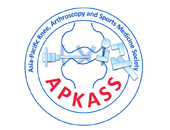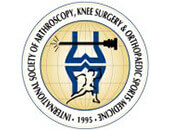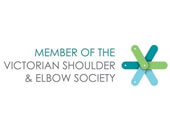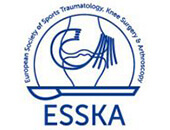ACL (Anterior Cruciate Ligament)
The anterior cruciate ligament is a crucial ligament that helps stabilise the knee. One of the most common knee injuries is an ACL tear and can occur with hyperextension and twisting of the knee.
ACL Reconstruction
ACL reconstruction surgery aims to replace a torn anterior cruciate ligament in your knee. Most of the surgery is performed inside the knee using keyhole surgery (arthroscopy) followed by a graft being held in place.
Arthritis
Arthritis is a medical condition that causes inflammation and damage to the joint which causes pain and discomfort.
Arthroscopy
A minimally-invasive procedure used to treat conditions of a joint. A small camera tube is inserted into the joint through a small incision which allows evaluation of any degenerative or arthritic changes to the joint. Special instruments can be used also through small incisions to perform surgical repairs and other procedures as necessary.
A shoulder arthroscopy procedure is used to treat common shoulder injuries and conditions, including rotator cuff tears and labral tears.
A knee arthroscopy treats knee injuries, including those that affect the knee cap, meniscus, ligaments, tendons and cartilage.
The surgery involves creating small incisions known as portals through which special instruments can be used to perform repairs, clean outs and reconstructions. The minimally invasive nature of this type of surgery results in generally faster recovery times (compared to open surgery).
Knee Replacement
A knee replacement is a type of joint replacement surgery that helps relieve pain and restore function to the knee. A knee replacement specialist will replace the joint with a new knee implant.
Labrum
The Labrum is a specialised cartilage that deepens the shoulder socket (glenoid) and helps to prevent your shoulder from coming out. When the ball gets close to the edge, the Labrum can act like a bumper bar and provide a barrier to dislocation.
Latarjet Procedure
Some instances of shoulder instability result in bone loss within the shoulder, ultimately increasing the risk of shoulder dislocation. The Latarjet Procedure is a surgery that uses a bone graft to support the shoulder and prevent it from dislocating.
Ligament
A ligament is a fibrous connective tissue that attaches bone to bone and usually serves to hold structures together and keep them stable.
Meniscus
The meniscus is a piece of tough cartilage in the knee that acts as a shock absorber between the femur (thighbone) and tibia (shinbone).
Meniscus Surgery
Meniscus surgery involves a knee arthroscopy or keyhole surgery which creates a tiny incision in the knee to insert a miniature camera. Depending on the severity of the injury the meniscus is either stitched up or trimmed away (partial meniscectomy)
Orthopaedic Surgeon
A specialist doctor who diagnoses and treats patients who suffer from injury or disease in any component of the musculoskeletal system. An orthopaedic doctor will also manage the rehabilitation process and provide rehabilitation advice to patients and their therapists.
Osteoarthritis
Sometimes called wear and tear arthritis, osteoarthritis (OA) is the most common type of arthritis. When the smooth cushion between bones (cartilage) breaks down, joints can get painful, swollen, and hard to move. Although osteoarthritis can damage any joint, it most commonly affects joints in the hands, knees, hips, and spine.
Patella
The Patella which is otherwise known as the kneecap is a bone that is located at the front of the knee joint. It helps protect the surface of the knee joint.
Patella Stabilisation Surgery
A surgical procedure that involves stabilising and realigning the patella. Arthroscopy may be needed if a loose body has been identified. Other surgical options include lateral release, medial patellofemoral ligament (MPFL) reconstruction, or open re-alignment surgery.
Pectoralis Major Repair
A pectoralis major tendon rupture occurs when the pectoralis major – the main muscle at the front of your chest – snaps due to increased pressure on the muscle, generally due to exercise. Surgery that involves sewing strong tapes to the end of the tendon and securing it back to the bone with special anchors, is required in order to restore the muscle to its original strength.
Radial Head
The radial head is the disc-shaped part of your elbow joint, which allows rotation of the forearm. The radial head transfers force from the wrist across the elbow joint and allows forearm rotation.
Radial Head Replacement
A radial head replacement is a surgical procedure where the injured or damaged radial head is replaced with an artificial joint. Radial head replacement is performed for degenerative diseases such as osteoarthritis or rheumatoid arthritis but is most commonly performed as a treatment for severe injuries such as a fracture of the radial head.
Reverse Shoulder Replacement
For patients with severe rotator cuff tears, a conventional shoulder replacement is not sufficient in improving their injury. Reverse total shoulder replacements place a ‘ball’ within the shoulder socket that enables the use of different shoulder muscles to provide these patients with movement to the shoulder that they could not execute previously.
Robotic Knee Replacement Surgery
A knee replacement procedure where the surgeon utilises a robotic arm to assist with the operation allowing more accurate placement of the components of the knee implant.
Rotator Cuff Surgery
A shoulder surgical procedure that aims to repair a complete or partial rotator cuff tear. A partial rotator cuff tear will usually only require a trimming or smoothing procedure whereas a full tear will need repair and reattachment of the tendon to the bone.
Shoulder Replacement
The shoulder replacement (arthroplasty) is used to treat arthritis of the shoulder by replacing the damaged parts with an artificial shoulder or implant. There are several types of shoulder replacement surgeries including:
- stemless or partial shoulder replacement
- conventional total shoulder replacement
- reverse total shoulder replacement
- revision total shoulder replacement
Superior Capsule Reconstruction (SCR)
Some rotator cuff tears can be so severe that the tendon injury is ultimately irreparable. Superior capsule reconstruction (SCR) is a new surgical treatment that aims to restore the stability and balance of the shoulder joint. Unlike other management techniques for irreparable rotator cuff tears, SCR has been shown to reduce pain and increase shoulder function, while also delaying and even preventing the need for a reverse total shoulder replacement.
Tendons
A tendon is a fibrous connective tissue that attaches muscle to bone. Tendons may also attach muscles to structures such as the eyeball. A tendon serves to move the bone or structure.
Tennis Elbow Surgery
Tennis elbow occurs when the muscles surrounding the elbow become painful and inflamed, or even torn, by overuse. For patients whose condition has not been improved by at least 3 months of physiotherapy, a surgery that repairs the damaged tendon may be required.











